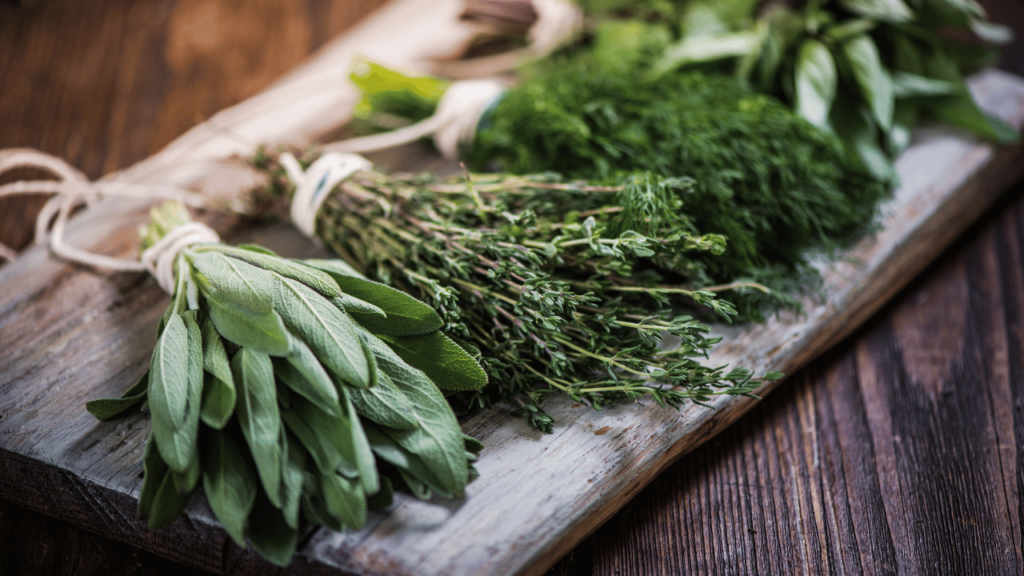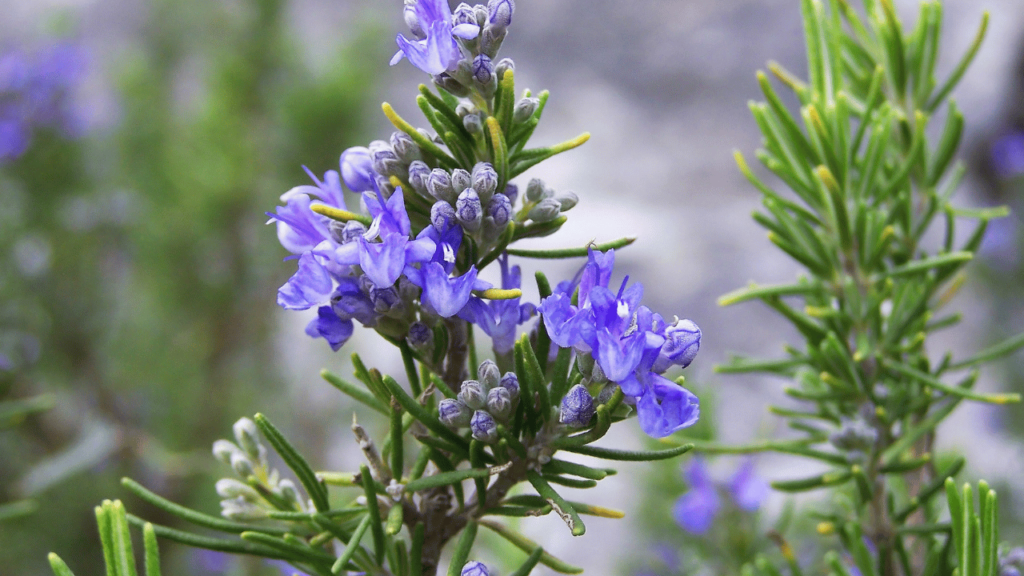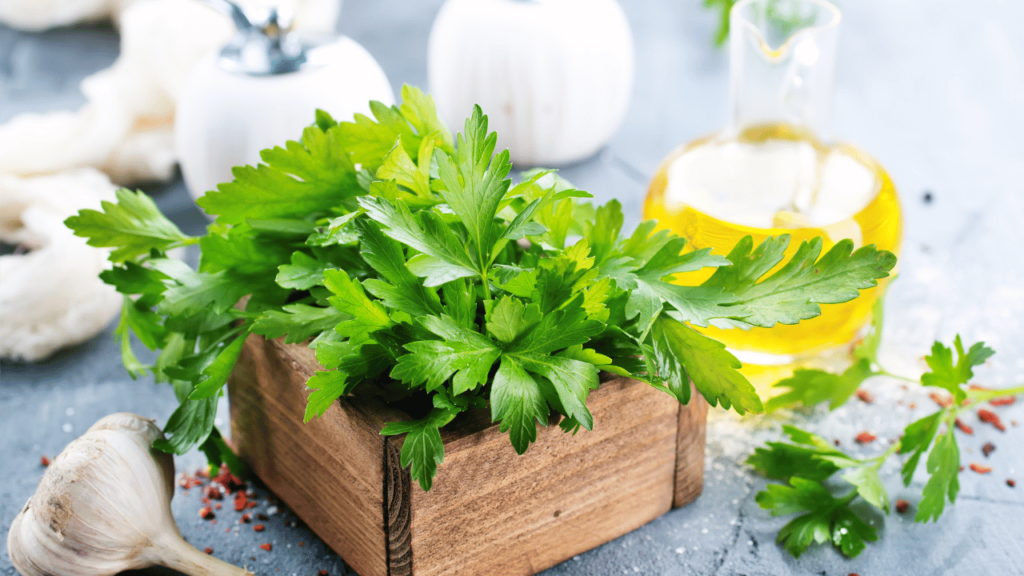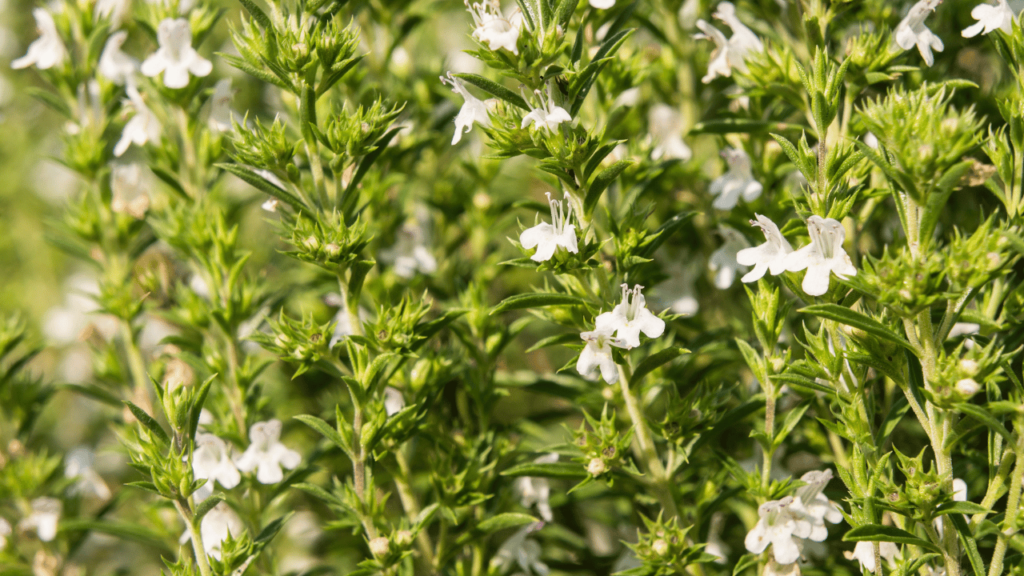Winter Herbs: A Guide to Cultivating and Utilizing Fresh Flavors During the Cold Season of 2023
Winter Herbs
Winter Herbs: A Guide to Cultivating and Utilizing Fresh Flavors During the Cold Season of 2023. Winter herbs are a group of herbs that can withstand colder temperatures and continue to grow during the winter season. They are hardy plants that can add fresh flavors to your dishes, even when other plants may not be thriving. Some popular winter herbs include rosemary, thyme, sage, parsley, chives, and winter savory. These herbs can be grown in containers or in your garden, and they’re a great way to add flavor and freshness to your winter cooking.

Famous Winter Herbs
Here are the names of some winter herbs. These herbs can withstand colder temperatures and continue to grow during the winter season. They are perfect for adding delicious flavors to your winter dishes.
- Rosemary
- Thyme
- Sage
- Parsley
- Chives
- Winter savory
Rosemary
Rosemary is a wonderful herb known for its aromatic and flavorful properties. It’s a perennial herb with needle-like leaves and small, delicate flowers that can range in color from white to pale blue. Rosemary is native to the Mediterranean region but is now grown and used in various cuisines around the world.
In terms of flavor, rosemary has a distinct and robust taste that is often described as piney and slightly peppery. It pairs well with a variety of dishes, including roasted meats, vegetables, soups, and stews. You can use the whole sprigs of rosemary or strip the leaves off the stem and chop them for a more subtle flavor.

Aside from its culinary uses, rosemary has also been used for centuries for its medicinal properties. It is believed to have antioxidant and anti-inflammatory effects and may help improve digestion and memory. Some people even use rosemary essential oil for aromatherapy purposes.
When it comes to growing rosemary, it prefers well-drained soil and plenty of sunlight. It can be grown in pots or directly in the ground, making it a versatile herb for both indoor and outdoor gardens.
Overall, rosemary is a versatile and flavorful herb that can elevate the taste of your dishes while adding a delightful aroma. Whether you’re using it in cooking or exploring its potential health benefits, rosemary is a fantastic addition to any herb garden or kitchen.
Thyme
Thyme is another wonderful herb that is widely used in cooking and has a delightful aroma. It is a small, perennial plant with tiny, oval-shaped leaves and small flowers that can range in color from white to pink.
Thyme has a distinct and earthy flavor, often described as slightly minty with hints of lemon and pine. It pairs well with a variety of dishes, including roasted meats, vegetables, soups, and sauces. You can use thyme leaves fresh or dried, and it adds a lovely depth of flavor to your culinary creations.
Aside from its culinary uses, thyme has also been used for its potential health benefits. It contains antioxidants and has antimicrobial properties, which may help support the immune system and promote overall well-being. Thyme is also known for its soothing properties and is often used in herbal teas or as an ingredient in natural remedies.

When it comes to growing thyme, it is a hardy herb that thrives in well-drained soil and full sunlight. It is a great option for both outdoor gardens and container gardening. Plus, thyme is a perennial plant, which means it can come back year after year with proper care.
Overall, thyme is a versatile and flavorful herb that can enhance the taste of your dishes while providing potential health benefits. Whether you’re using it in cooking or exploring its herbal properties, thyme is a fantastic addition to any herb garden or kitchen.
Sage
Sage is such a fantastic herb with a unique flavor and a rich history. Sage is a perennial plant with soft, gray-green leaves and beautiful purple flowers. It’s native to the Mediterranean region and has been used for centuries in cooking, medicine, and even as a sacred herb in certain cultures.
When it comes to flavor, sage has a warm and earthy taste with hints of peppery and slightly minty undertones. It’s often used to add depth and complexity to dishes, particularly in savory recipes. Sage pairs well with poultry, pork, and other meats, as well as in stuffings, sauces, and even in some desserts.

Beyond its culinary uses, sage has been traditionally associated with various health benefits. It’s believed to have antioxidant and anti-inflammatory properties and may support digestion and memory. Some people also use sage as a natural remedy for sore throats or as an ingredient in herbal teas.
If you’re considering growing sage, it’s a relatively low-maintenance herb that thrives in well-drained soil and prefers full sunlight. It can be grown in pots or directly in the ground, making it a versatile addition to any herb garden.
Whether you’re using sage in your favorite recipes or exploring its potential health benefits, it’s a wonderful herb to have on hand. Its distinct flavor and versatility make it a great choice for adding a touch of culinary magic to your dishes.
Parsley
It’s a vibrant herb that adds a burst of freshness to dishes. Parsley has bright green, curly, or flat leaves, and it’s commonly used as a garnish or as an ingredient in various cuisines around the world.
When it comes to flavor, parsley has a mild and slightly peppery taste, with hints of freshness and a subtle earthiness. It’s often used to enhance the flavors of other ingredients in dishes like salads, soups, sauces, and marinades. Parsley is versatile and can be used both as a fresh herb or dried.
Not only does parsley add a pop of color and flavor to your meals, but it also offers some potential health benefits. It’s a good source of vitamins A, C, and K, as well as folate and iron. Some studies suggest that parsley may have antioxidant and anti-inflammatory properties, and it may also help support digestion.

Growing parsley is relatively easy, and it can be grown in pots or directly in the ground. It prefers well-drained soil and partial to full sunlight. You can even grow parsley indoors on a sunny windowsill, ensuring a fresh supply all year round.
So, whether you’re sprinkling fresh parsley on top of your favorite dishes or using it as an ingredient to enhance flavors, parsley is a versatile and nutritious herb that can elevate your culinary creations.
Chives
They’re like the cool cousin of onions and garlic. These slender, green herbs belong to the same family as onions and have a mild, delicate flavor with a hint of oniony goodness.
Chives are known for their long, tubular leaves that are often snipped into small pieces and used as a garnish or ingredient in various dishes. They add a pop of freshness and a subtle onion flavor to salads, soups, dips, and even scrambled eggs. You can also use chives to make a flavorful compound butter or sprinkle them over baked potatoes for an extra kick.

One of the great things about chives is that they’re easy to grow, making them a perfect addition to your herb garden or even a windowsill pot. They thrive in well-drained soil and prefer a sunny spot. Plus, their purple flowers are not only pretty but also edible!
If you’re looking to add a touch of mild onion flavor to your dishes, chives are a fantastic option. They’re versatile, easy to use, and can elevate the taste and presentation of your culinary creations.
Winter savory
Winter savory is a fantastic herb that adds a savory and peppery flavor to dishes. It’s a close relative of summer savory and is known for its robust taste and aroma. Winter savory has small, narrow leaves and is often used as a seasoning in various cuisines.
The flavor of winter savory is similar to thyme, with a hint of peppery spiciness. It pairs well with meats, stews, soups, and roasted vegetables, adding a delicious depth of flavor. You can use it as a fresh herb or dried, depending on your preference and availability.

In addition to its culinary uses, winter savory also has some potential health benefits. It contains compounds that may have antioxidant and antimicrobial properties. Some people also use it for its digestive and respiratory benefits.
When it comes to growing winter savory, it’s a hardy herb that can withstand colder temperatures. It prefers well-drained soil and full sun. You can plant it in your garden or in a pot, ensuring a fresh supply of savory goodness throughout the winter months.
So, if you’re looking to add a savory and peppery kick to your dishes, give winter savory a try. It’s a versatile herb that can elevate the flavors of your favorite recipes. Enjoy experimenting with it in your cooking